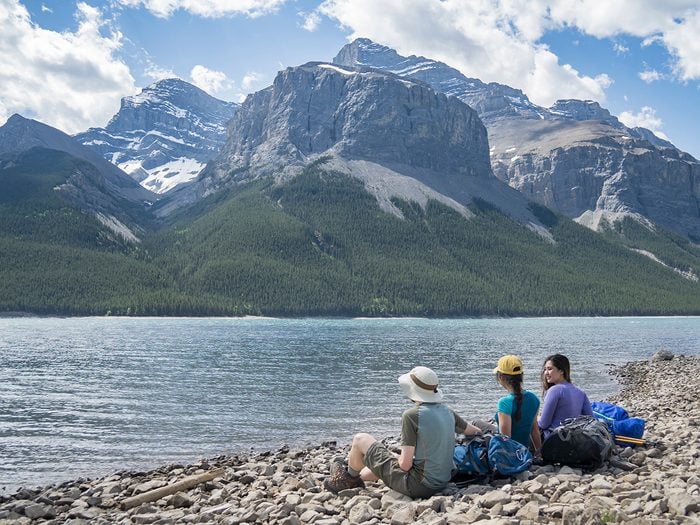
A Guide to All 20 UNESCO World Heritage Sites in Canada
You don’t need to travel far to experience some of the most magnificent places on the planet. Of the 167 countries with UNESCO World Heritage List designations, Canada ranks 14th with no fewer than 20 sites deemed as having “universal value” and worth preserving by the United Nations Educational, Scientific and Cultural (UNESCO) agency. Some of these sites bear witness to the evolution of life, while others are famed for their breathtaking natural environment. We’ve listed all 20 UNESCO world heritage sites in Canada—from west to east—to inspire the ultimate cross-country bucket list.
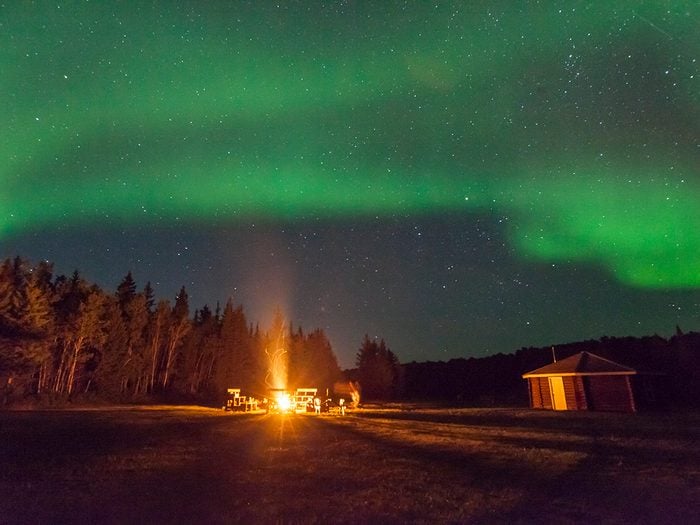
Wood Buffalo National Park
Where: Alberta and Northwest Territories
What better way to begin a cross-country tour than at Wood Buffalo National Park, which spans 44,807-square-kilometres of northern boreal plains and carries the distinction of being the largest national park in Canada. Straddling the border of Alberta and the Northwest Territories, it was formed in 1922 to protect the last remaining herds of wood bison—a threatened species—in North America. Among the various wildlife that can be found here is the endangered whooping crane, which was saved from near extinction by the park’s unique breeding habitat. As the world’s largest dark sky preserve, the views can’t get better than this.
If you can’t get enough of the night sky, don’t miss the 10 best places for stargazing across Canada.
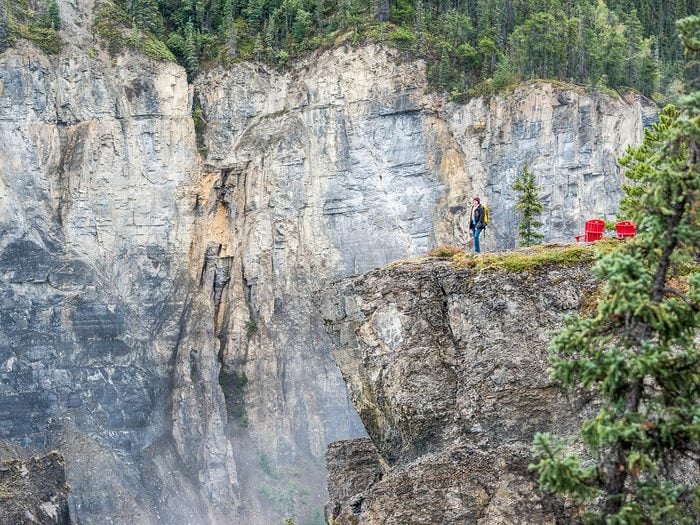
Nahanni National Park Reserve
Where: Northwest Territories
There’s no shortage of striking natural wonders to take in at Nahanni National Park Reserve, or Nahʔą Dehé in Dene language. Its diverse topography is punctuated by granite spires, deep canyons and the South Nahanni River, which flows into Náįlįcho (Virginia Falls) at double the height of Niagara Falls. In 1978, it was one of the dozen natural heritage sites first named to the UNESCO World Heritage List, alongside places like the Galapagos Islands and Yellowstone National Park. The park is managed co-operatively with the Dehcho First Nations, whose ancestors have lived here for centuries. Whether you’re paddling the rapids or climbing the mountains high above, it’s certain to be an unforgettable experience.
Don’t miss the 10 most beautiful waterfalls in Canada.
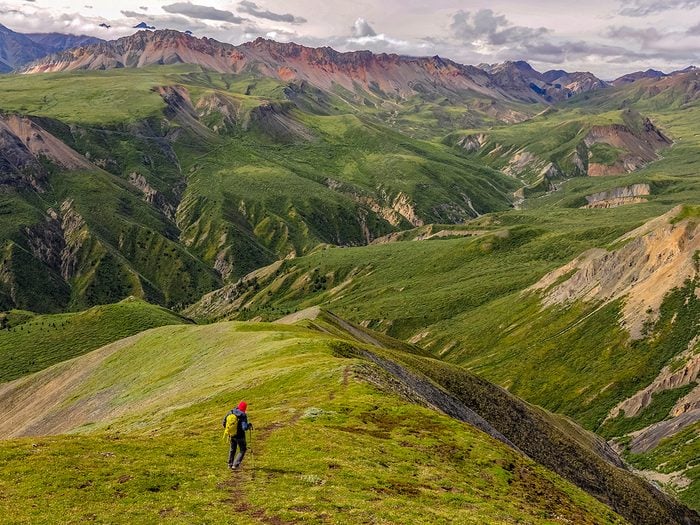
Kluane/Wrangell-St Elias/Glacier Bay/Tatshenshini-Alsek
Where: Yukon and British Columbia
Spanning the Yukon, B.C. and Alaska, Kluane/Wrangell-St Elias/Glacier Bay/Tatshenshini-Alsek is an impressive international park system that encompasses both the tallest peaks on the continent and the largest non-polar icefield in the world. Grizzly bears, caribou and Dall sheep roam the mountains, icefields and glaciers—of which there are more than 200. The rugged landscape is also a climber’s dream, with Mount Logan, Canada’s tallest mountain, located in Kluane National Park and Mount Fairweather in B.C.’s Tatshenshini-Alsek Provincial Park.
Here are the 10 places in Canada every Canadian needs to visit.
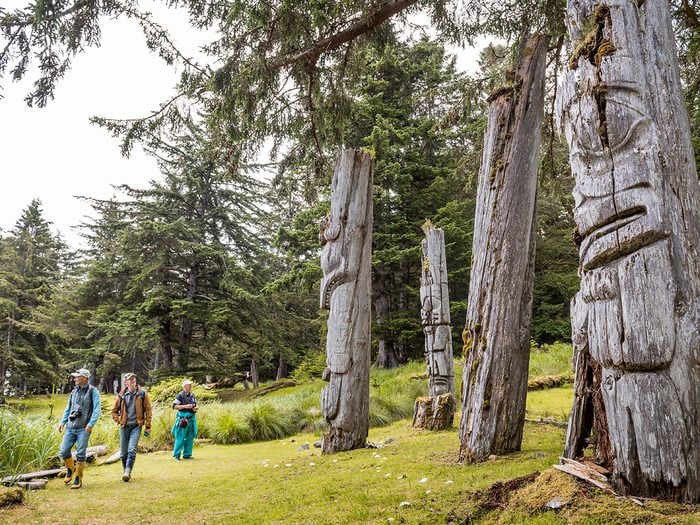
SGang Gwaay Llnagaay (Nan Sdins)
Where: British Columbia
At the southwest corner of Gwaii Hannas is SGang Gwaay (Anthony Island) is the village of SG̱ang Gwaay Llnagaay (Nan Sdins), which was designated a UNESCO World Heritage site due to its preservation of Haida culture. The village was occupied until about 1880 and the remains of the cedar long houses, carved mortuary and memorial poles commemorate Haida art and oral traditions. Today, it continues to be a spiritual site for the Haida as the resting place for many ancestors.
Discover more essential experiences on Canada’s west coast.
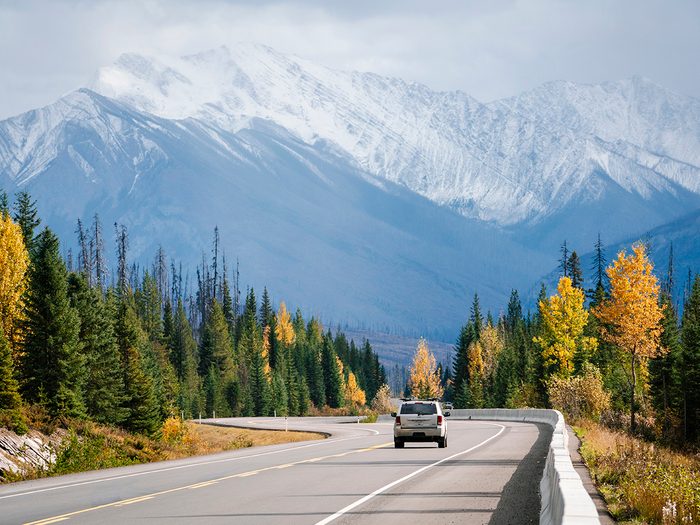
Canadian Rocky Mountain Parks
Where: British Columbia and Alberta
If you’re looking for awe-inspiring views on your travels, it doesn’t get any better than this. The Canadian Rocky Mountain Parks consist of seven national and provincial parks—including Banff, Jasper and Mount Assiniboine—boasting glorious mountain landscapes filled with glaciers, alpine meadows and limestone caves. In addition to its jaw-dropping beauty, it’s also home to the Burgess Shale Fossil Site, considered one of the world’s most significant fossil fields for its stunning preservation of animal life as it evolved over 500 million years ago.
Explore more of Canada’s most awe-inspiring natural wonders.
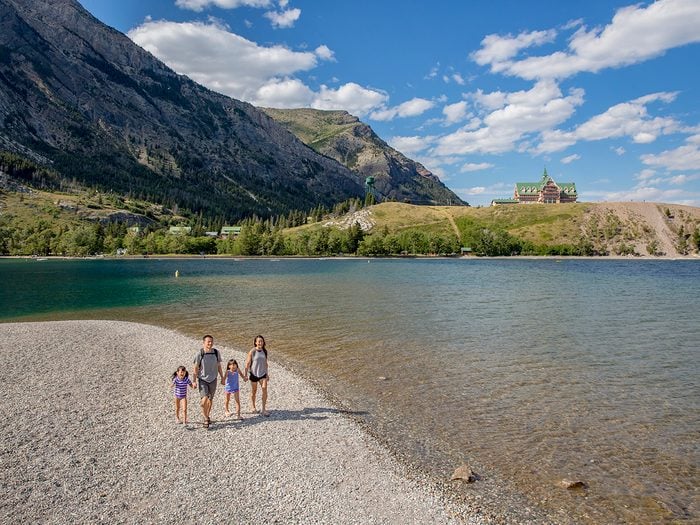
Waterton Glacier International Peace Park
Where: Alberta
In 1931, the Rotary Clubs of Alberta and Montana proposed to join the province’s Waterton Lakes National Park with the state’s Glacier National Park in what would become the world’s first international Peace Park. The goal? To promote goodwill between the nations and to reinforce the co-operation needed to protect the environment. Its ecologically diverse and complex landscape jumps from mountain ranges in the north and south to prairies in the east, with abundant wildlife and wildflowers in-between. Take in the scenery with a hike, bike or kayak—you might even spot the migrating elk herds.
Explore 10 national parks every Canadian needs to visit.
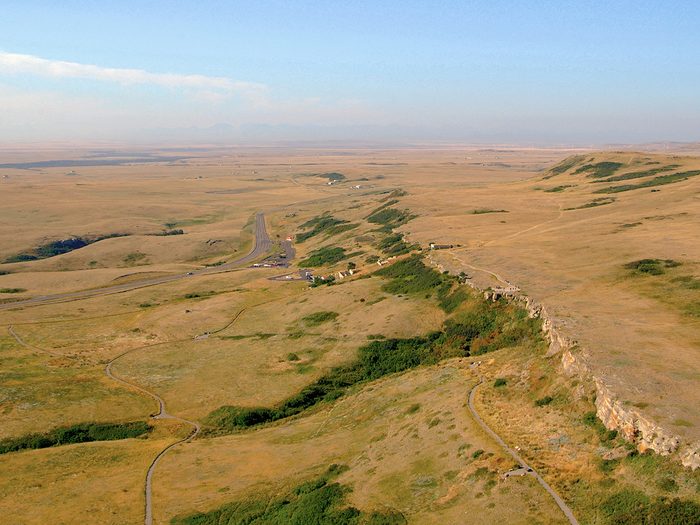
Head-Smashed-In Buffalo Jump
Where: Alberta
For more than 6,000 years, the Indigenous peoples of North America’s Great Plains relied on bison for food, clothing, shelter, tools and fire. The bison would be funneled into lanes that ended at a precipice, causing the herds to stampede over the cliff. Head-Smashed-In Buffalo Jump, located where the Rocky Mountains meets the Great Plains, is the best-preserved example of this communal hunting technique.
Check out 20 mind-blowing artefacts you’ll find in Canadian museums.
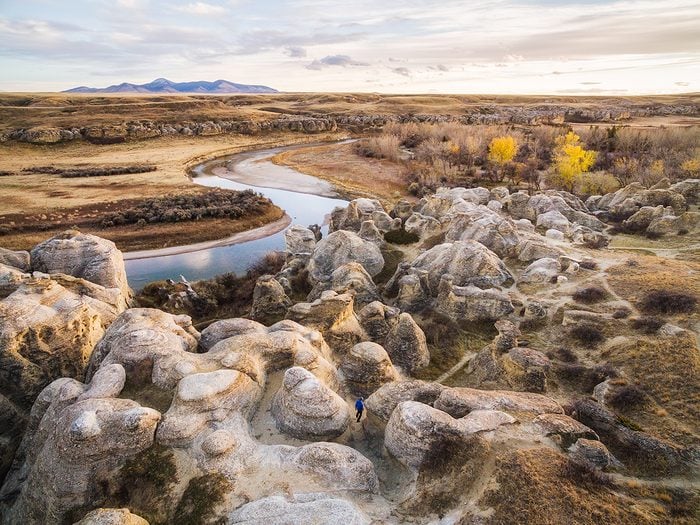
Writing-on-Stone/Áísínai’pi
Where: Alberta
This sacred site on the northern edge of the Great Plains is home to thousands of petroglyphs and pictographs—one of the largest concentrations of Indigenous rock art in the North American plains. The Siksikaitsitapi (Blackfoot Nation) and other passing groups painted and carved onto the sandstone cliffs of the Milk River Valley and surrounding ravines to depict biographical, ceremonial and spiritual stories.
Take a photographic tour of Canada’s western provinces.
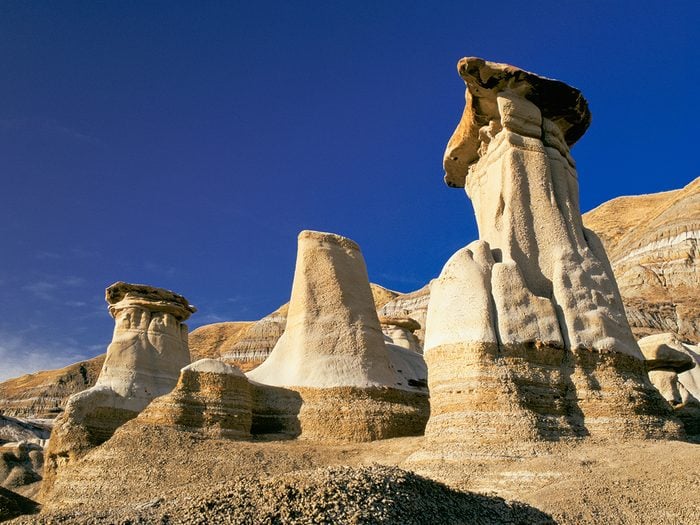
Dinosaur Provincial Park
Where: Alberta
Welcome to real life Jurassic Park. As the name suggests, those looking for a glimpse of pre-historic life won’t be disappointed by Dinosaur Provincial Park. Stretching across 26 kilometres of Alberta’s badlands, the site is home to one of the richest dinosaur fossil fields in the world, with representation from more than 44 species dating back over 75 million years. To date, 150 complete skeletons have been excavated and are now housed in major museums. To make the most of your visit, be sure to reserve tickets in advance for interpretative programs including guided hikes and bus tours.
Discover the best places to see dinosaur fossils across Canada.
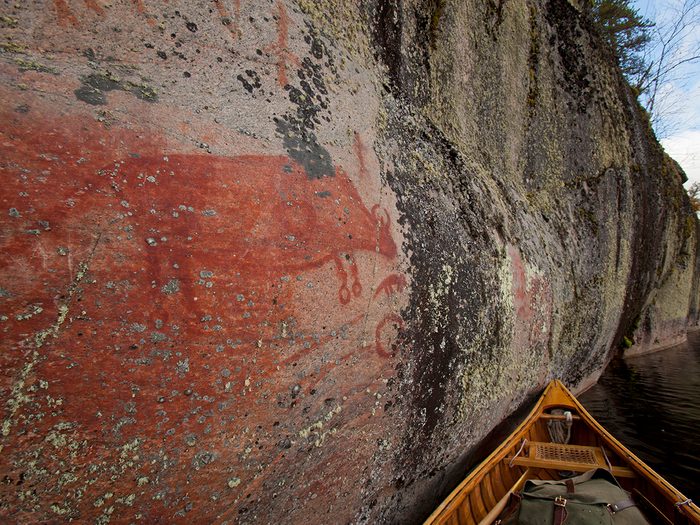
Pimachiowin Aki
Where: Manitoba and Ontario
Anishinaabemowin (Ojibwe) for “the land that gives life,” Pimachiowin Aki is Canada’s first and only mixed World Heritage property, which recognizes both the natural and cultural significance of the site. As the largest protected area in the North American boreal shield, it’s comprised of the traditional lands of four Anishinaabeg communities, who have been the stewards for more than 7,000 years. Its geography of rivers, lakes and wetlands have been preserved for millennia through the cultural practice of Ji-ganawendamang Gidakiiminaan, or “keeping the land.” This guides the relations between the Anishinaabeg and the land, and includes practices like spiritual ceremonies and controlled burning of shoreline vegetation.
Here are the hidden gems in Ontario worth adding to your itinerary.
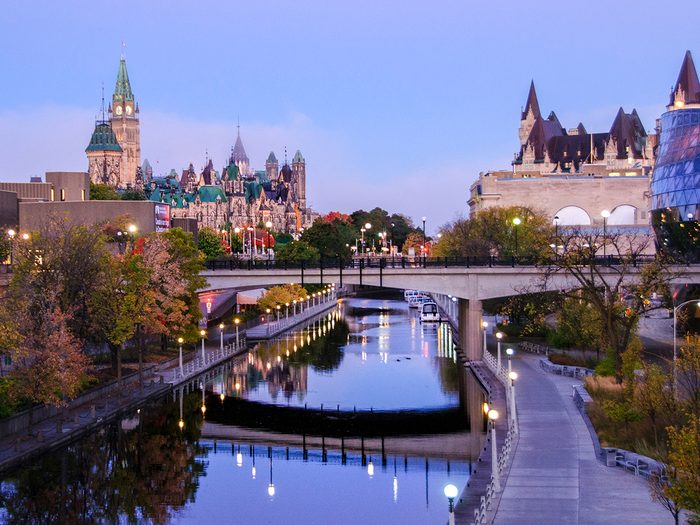
Rideau Canal National Historic Site
Where: Ontario
Originally planned as a military supply route following the War of 1812, the Rideau Canal is not only an incredible feat of engineering, it’s also the oldest continuously operated canal in North America. Built by thousands of Irish immigrants, French Canadians and Scottish stonemasons and labourers, it opened in 1832 and is the only canal from this era that still operates along its original route. Today, you can admire this monumental achievement at 24 lockstations spread across 202 kilometres from Kingston to Ottawa.
Read up on the Rideau Canal’s fascinating history.
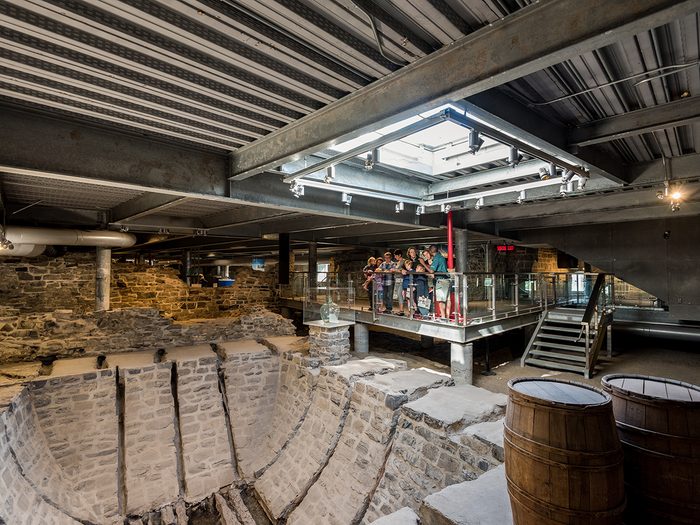
Historic District of Old Quebec
Where: Quebec
Step back in time more than 400 years in the Historic District of Old Quebec. Located within Quebec City—the only fortified city north of Mexico—the historic centre is a remarkably well-preserved example of a colonial town, having served as the capital of both New France and the new British Colony. With nearly half of the structures built before 1850, it’s easy to get lost walking along the cobbled streets, admiring the architecture. When you’re done soaking in the history, take a stroll through Petit-Champlain, one of the oldest shopping streets in North America.
Nearby, you’ll find the Plains of Abraham—reportedly one of the most haunted places in Canada.
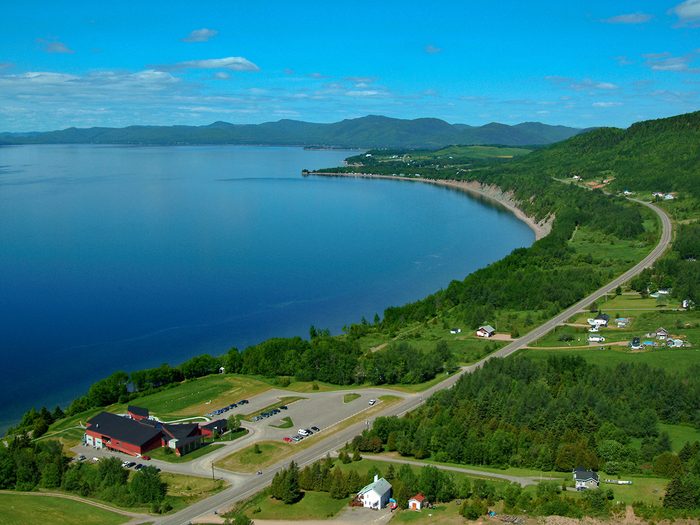
Miguasha National Park
Where: Quebec
Explore Miguasha National Park in southeastern Quebec to discover what the “Age of Fishes,” or the Devonian Period, looked like 370 million years ago. Back then, the coast of the Gaspé Peninsula was a tropical paradise where an astonishing variety of fish and plants thrived. Today, it’s renowned for its exquisitely preserved fish fossils, including specimens like the Eusthenopteron foordi, whose limb-like fins and respiratory system gave rise to the first four-legged, air-breathing terrestrial vertebrates.
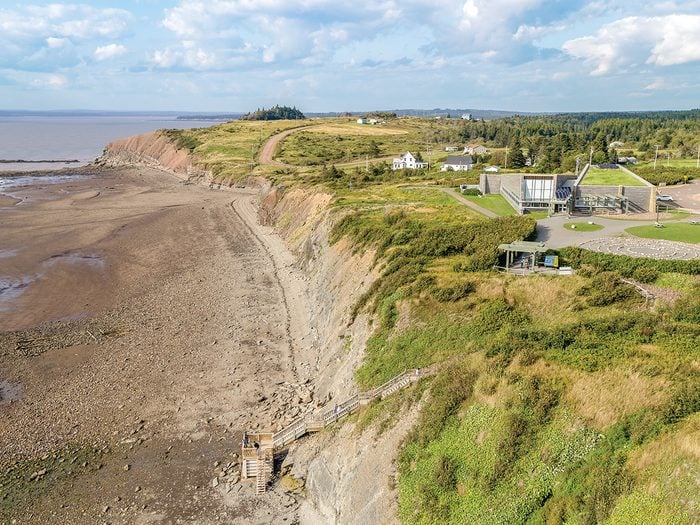
Joggins Fossil Cliffs
Where: Nova Scotia
Preserved within Joggins Fossil Cliffs, a.k.a. the “coal age Galapagos,” are the most complete and accessible preservation of animal and plant life from the Pennsylvanian (or Carboniferous) period—roughly 300 million years ago—including the first reptiles. Due to constant erosion from the Bay of Fundy tides, new fossils are regularly exposed and visitors may even stumble across a fallen specimen while strolling the beach. Stop by the Joggins Fossil Centre to learn more about its geological history and to sign up for a guided beach tour.
These mind-blowing Canadian geography facts will have you seeing our country in a whole new light.
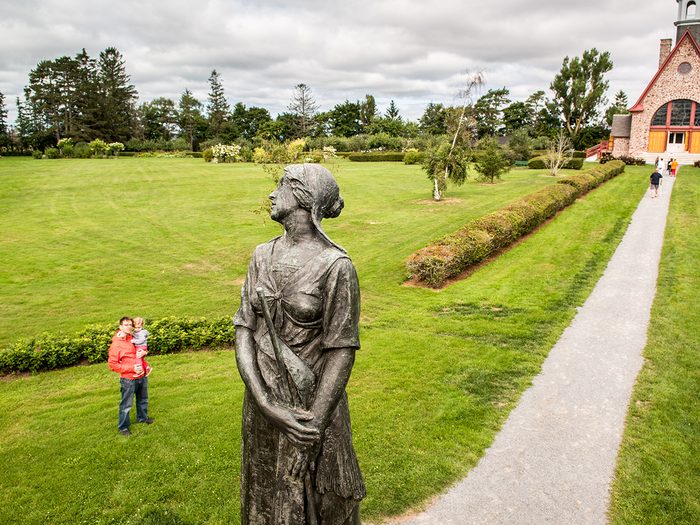
Landscape of Grand Pré
Where: Nova Scotia
Compared to the other parks listed here, this 13-square-kilometre site is pretty small, but what it lacks in size, it more than makes up for in historical significance. Located in Nova Scotia’s idyllic Annapolis Valley on the Bay of Fundy’s Minas Basin, the Landscape of Grande Pré seems frozen in time—in the 1680s, to be exact. It was during that time that Acadians established settlement in this area and developed agriculture using a system of dykes and drainage networks. It’s also a memorial to the Grand Dérangement, which marked the forced expulsion of the Acadian people from the community. Tip: Head to the View Park on Old Post Road for a panoramic vista.
Find out what it’s like to follow Nova Scotia’s Evangeline Trail.
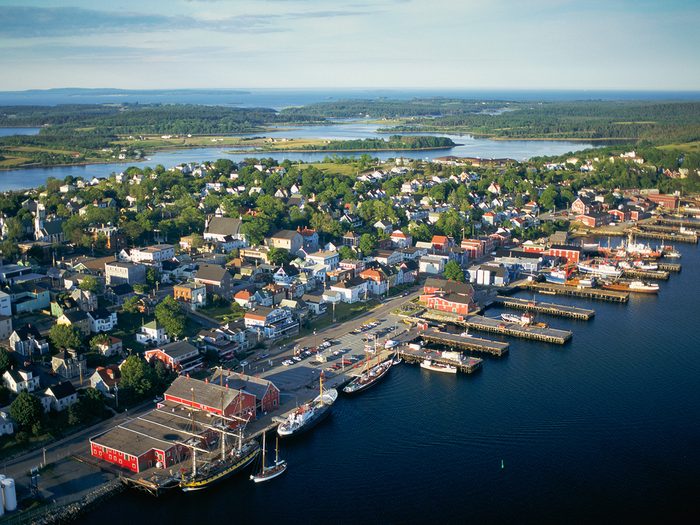
Old Town Lunenburg
Where: Nova Scotia
You might have spotted Lunenburg’s colourful wooden houses on a postcard before, but there’s more to this historic site than the picturesque scenery. Established in 1753 on the southwest coast of Nova Scotia, Old Town Lunenburg is the best surviving example of planned British colonial settlement in North America. The “model town” plan divided the land into lots using only straight streets—a distinguishing feature that has resulted in some extremely steep routes. (If you’re embarking on a walking tour, bring comfortable shoes and be prepared for a bit of a workout.) Of the 400 major structures in town, 70 per cent date back to the 18th- and 19th-centuries. Today, the seaside community is a bustling tourist attraction with restaurants, breweries and artisan shops, complete with a spectacular waterfront view.
Make the most of your vacation with these unforgettable day trips from Halifax.
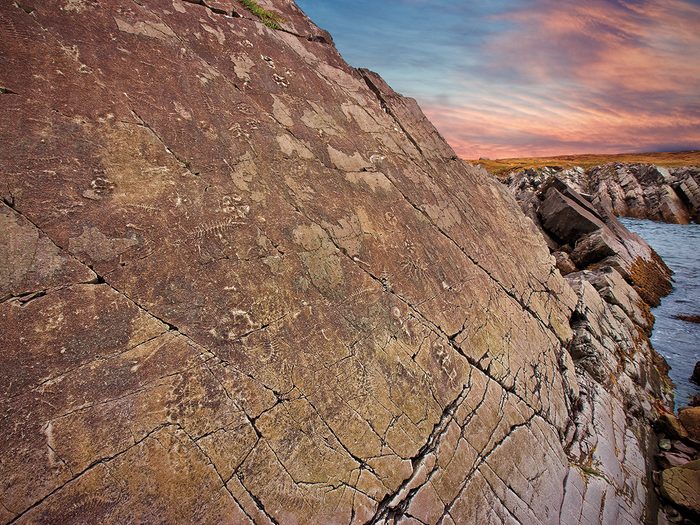
Mistaken Point
Where: Newfoundland and Labrador
Head to the rocky coastal cliffs on the southeastern tip of Newfoundland to experience the history of life on Earth first-hand. The Mistaken Point Ecological Reserve is home to more than 10,000 fossil impressions from the Ediacaran Period (580 to 560 million years ago). The fossils, which range from a few centimetres to almost two metres in length, make the site one of the most abundant and diverse records of evolution in the world. If you want to get a closer look, make sure to plan ahead—booking a guided tour is the only way to view the fossils.
Discover the fascinating stories behind Canada’s funniest town names.
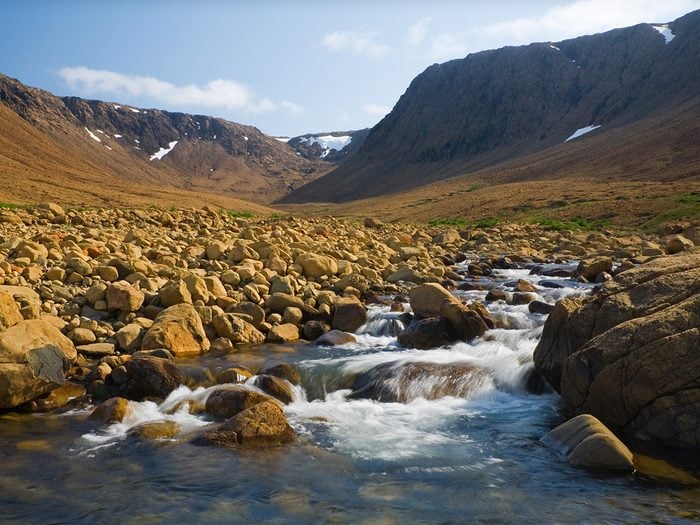
Gros Morne National Park
Where: Newfoundland and Labrador
From its soaring cliffs to freshwater fjords, there’s no denying Gros Morne National Park is one of Canada’s most stunning natural wonders. But it’s not just recognized as a World Heritage site because of its beauty. Within the park is one of the world’s best examples of plate tectonics—the scientific theory that continent-sized blocks of the Earth’s crust have collided and separated over time, creating geological features such as mountains and oceans. Pick up a map of the Tablelands to plan a hike on one of the many trail routes for a different vista at each lookout.
Lace up your boots and embark on the 10 best hikes in Canada.
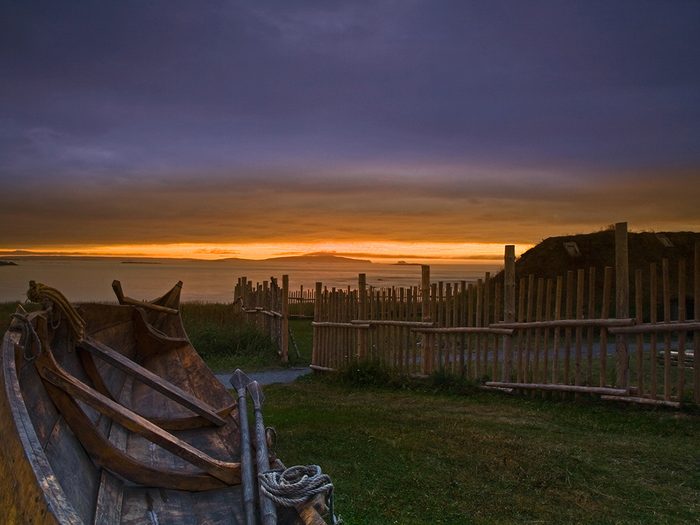
L’Anse aux Meadows National Historic Site
Where: Newfoundland and Labrador
More than a thousand years ago, Norse expeditions sailed from Greenland to the tip of Newfoundland’s Great Northern Peninsula and built a small camp of timber-and-sod buildings. Their landing at L’Anse aux Meadows is the first known evidence of European presence and settlement in North America. The ruins were discovered in 1960 by noted Norwegian archeologists Helge Ingstad and Anne Stine Ingstad, who followed Viking sagas recorded in medieval Icelandic manuscripts. Later excavation of the site revealed the remains of eight buildings and hundreds of iron, bronze and bone artefacts. Today, costumed interpreters are on-site to lead tours of the recreated base camp and give visitors a taste of the Viking life.
Check out 10 essential experiences on the east coast of Canada.
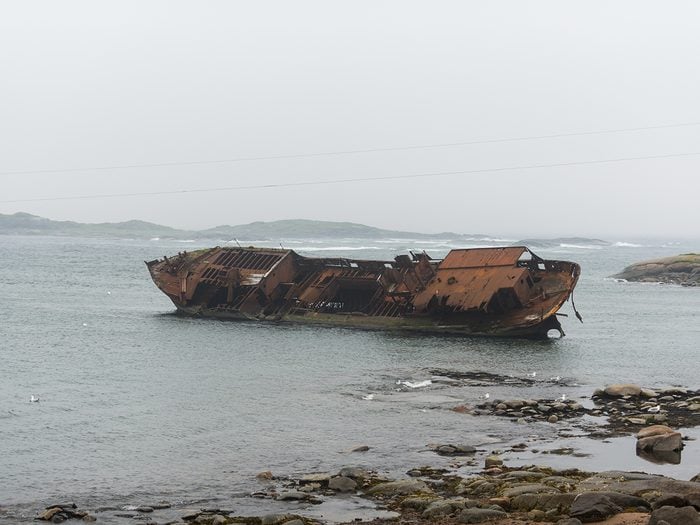
Red Bay Basque Whaling Station
Where: Newfoundland and Labrador
In the mid-16th century, thousands of Basque whalers travelled from France and Spain to Canada’s eastern shores to hunt for North Atlantic and Greenland Right Whales. At this time, whale oil was a highly prized commodity in Europe where it was used as lamp oil, leather lubricant and an additive in paints and soaps. The blubber would be rendered into oil on site, packaged for transport and eventually brought across the North Atlantic Ocean to be sold. The Red Bay Whaling Station is one of the best-preserved examples of early industrial-scale whaling—its archeological remains span more than a dozen shore stations (copper cauldrons over fire pits where the fat was extracted) and vessels.
Next, check out 10 historical landmarks every Canadian needs to visit.